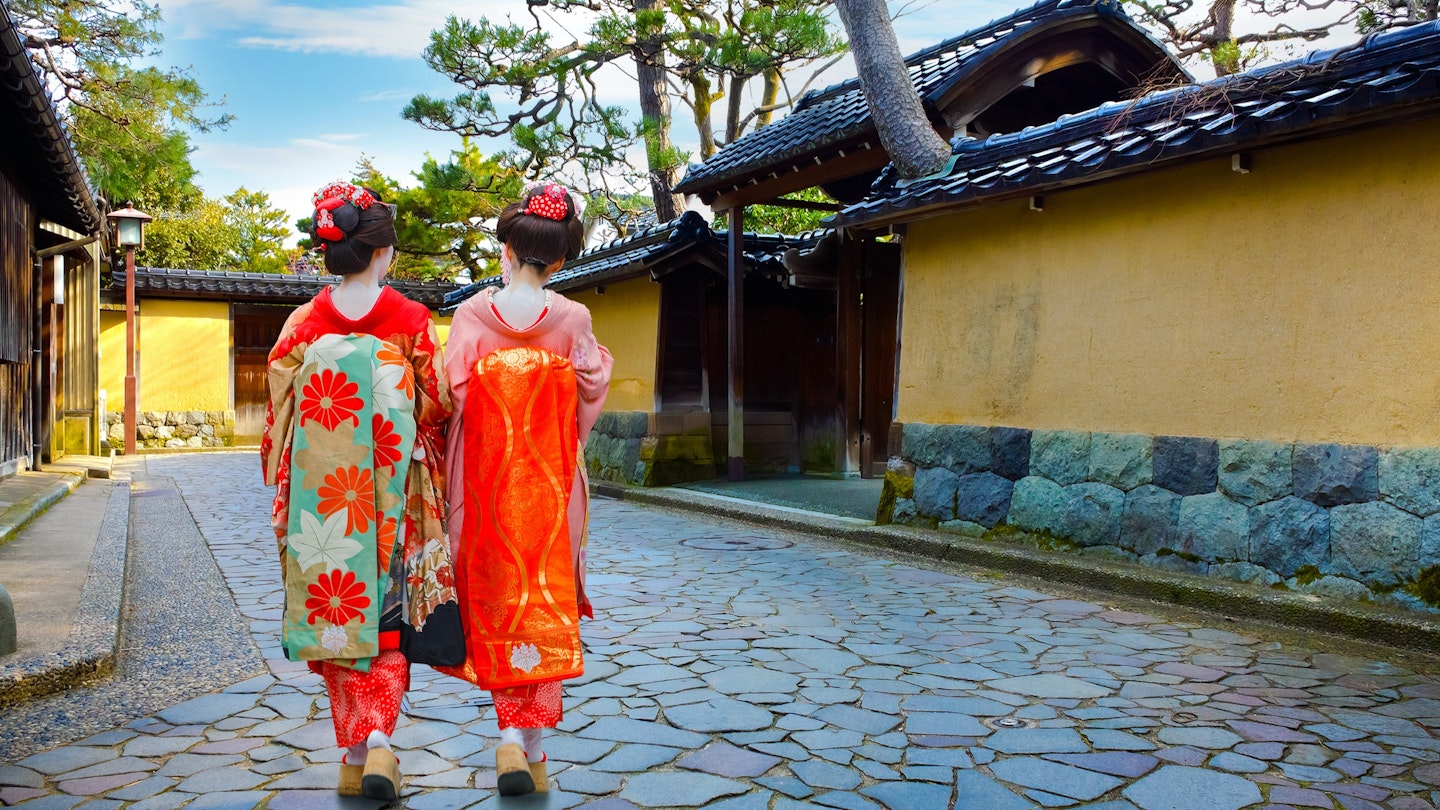An Artistic Journey Through Ishikawa
For a small, remote coastal prefecture on Japan’s northern sea coast, Ishikawa features far more than its fair share of cultural attractions. From the romantically subdued cosmopolitan grandeur of Kanazawa to the quiet crafts hamlet of Wajima near the tip of the Noto Peninsula, Ishikawa’s cultural offerings are among the most diverse in Japan.
A Home for the Arts
A great place to start your tour of Ishikawa’s crafts scene is the Ishikawa Prefectural Museum of Traditional Arts and Crafts. Conveniently, it is situated in a serene corner of Kenrokuen, a star attraction of Kanazawa in its own right. The so-called ‘perfect garden,’ Kenrokuen reportedly took more than 200 years to design and opened to the public in 1874. It remains beautiful throughout every season and weather, but is perhaps best in the early morning, when sunlight filters through the trees and crowds are sparse.
Take a leisurely stroll through the park and be ready when the museum opens at 9am. You will need a few hours to fully absorb the offerings. Begin with the museum’s splendid collection of exquisite Mizuhiki jewelry and decorations, crafted from twisted paper cords. These cords are intricately woven into stunning shapes and designs. It is said that during Kanazawa’s heyday, samurai made mizuhiki as a side project, using their creations to secure their topknots.
Colourful Ceramics
From there, move to the Kaga region, which is home to some of Japan’s most celebrated ceramics that are proudly displayed at the museum. Kutani ceramics are distinguished by detailed scenes of nature, people, and landscapes depicted in striking, rich colors influenced by the cold, grey winters of the Ishikawa coast. The first kiln for firing Kutani ceramics was established in the 17th century when the feudal lord of the Maeda clan commissioned local artisans to produce high-quality porcelain. Some ceramic pieces from this era remain on display in museums and private collections, though they are incredibly rare.
In the 19th century, Kutani ceramic artisans diversified their styles. One notable style featuring more red pigments and gold overlay gained popularity in Europe during the late 19th century and continues to capture interest today. Modern Kutani artisans have also expanded their craft, incorporating traditional techniques into everyday items such as sneakers and USB flash drives.
Bolts of Color
Before leaving the museum, don’t miss the display of intricate silk dyed using the yuzen technique, originating from nearby Kanazawa, known for its natural hot springs. The yuzen technique, which developed over five centuries ago, employs five principal colors—red, yellow, indigo, green, and purple—all derived from natural sources.
The dye application process often employs a gradation technique known as bokashi, creating a sense of depth and dimension. Kimono and other silks dyed with the yuzen technique are luxurious and highly valued garments. The technique is celebrated throughout Ishikawa and Japan as a whole. For instance, at the Kanazawa shinkansen (bullet train) station, you can spot examples of yuzen silk dyeing showcased near the entrance to the public restrooms: a red motif for women and a blue one for men.
Before departing Kanazawa, make sure to wander through the historic samurai and geisha quarters, where charming old wooden storefronts and hidden courtyards showcase centuries of craft tradition.
A Golden Touch
Your next destination is the Noto Peninsula, Japan’s wild and rugged extension into the Sea of Japan. Wajima, the largest city on the peninsula, is an old fishing and commercial port renowned for its outstanding lacquerware. Thanks to the Hokuriku shinkansen, which connects Kanazawa and the entire Ishikawa region to the rest of Japan, Wajima has evolved into a go-to destination for urbanites seeking to explore traditional crafts and soak up the rich atmosphere.
Strolling through the lively Asa-ichi morning market, observing young families from Kanazawa bargaining with seasoned vendors for lacquerware and dried whole squid, provides a delightful way to spend an hour or two—particularly when fueled by Kalpa’s excellent coffee.
However, your primary interest lies in the lacquerware, which artisans in this region have crafted since the 15th century. Timing your visit to coincide with an exhibit at the Ishikawa Wajima Museum of Urushi Art is highly recommended. The museum showcases a rotating collection of traditional and contemporary Wajima lacquerware, alongside artifacts from other parts of Asia displayed across two floors.
Here, you can delve into the intricate craftsmanship involved in creating traditional Wajima lacquerware, starting from the sap collection of the deciduous urushi tree, through its preparation and application, and concluding with the delicate application of gold leaf or gold powder for specially crafted pieces.
Bringing it All Together
If you’re interested in purchasing lacquerware, returning to Kalpa is advisable—where the barista is a fifth-generation lacquerware craftsman, and his family’s creations are available for sale in the café.
Alternatively, for an immersive experience in Wajima lacquerware, consider spending a night at the Oyado Tanaka ryōkan (traditional Japanese inn). Dinner there features an exquisite kaiseki (Japanese haute cuisine) meal, showcasing super-fresh local seafood served on elegant Wajima lacquerware. This offers a splendid opportunity to engage with Japan’s rich traditional culture.
This article showcases the vibrant arts and crafts found within Ishikawa, encouraging exploration and appreciation of Japan’s rich cultural heritage.





